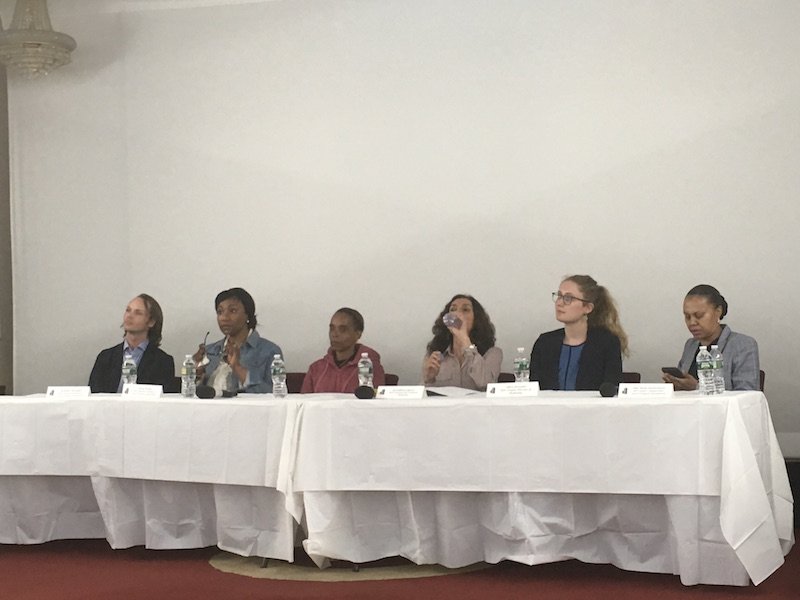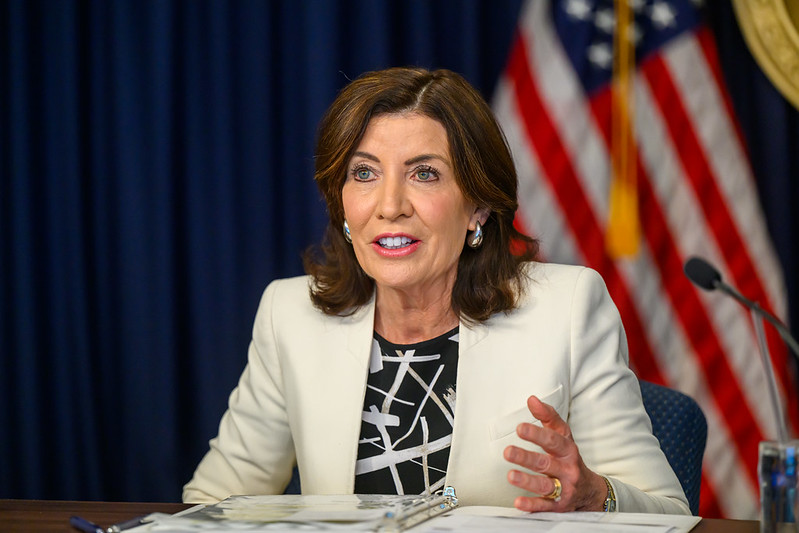City officials explained last night how the city’s affordable housing lotteries work and answered questions from Central Brooklyn residents about the lottery system.
City Council Majority Leader Laurie Cumbo (D-Fort Greene, Clinton Hill, Crown Heights) promoted and co-sponsored the event held at the Church of God of East Flatbush, 409 East 95th Street in East Flatbush, but wasn’t in attendance.

“When I talk to constituents, invariably affordable housing will pop up,” Cumbo told the BK Reader on Monday. “I wanted to ensure that my office served as a reliable ally. As Brooklynites, it behooves us to be equipped with the most up-to-date housing information that will help us best navigate the system.”
Panelists at the forum included Anne-Marie Hendrickson, Aileen Reynolds, and Josephine Logozzo from the NYC Housing Development Corporation (HDC); Taurean Lewis, the community engagement specialist for Brownsville Partnership Community Solutions; and Latisha Wright and Alexander McQuilkin from the city’s Department of Housing Preservation and Development (HPD).
The first half of the event had the speakers summarizing how to enter an affordable housing lottery, how to gauge whether or not they qualify for it, and how to gauge their chances of winning. The forum also included information on Housing Connect, a website that keeps track of all available housing units in the City.
As Logozzo explained, the HDC and HPD each have their own housing lotteries, which follow the same general guidelines but differ in terms of income limits and the size of the housing units offered. Additionally, some lotteries may give preferential treatment to elderly, disabled or veteran entrants.
“What differs is that every project has its own income limits and unit sizes,” said Logozzo. “So when you are looking at the Housing Connect website… you should be opening each individual advertisement and checking for the unit sizes to make sure that the unit sizes are compatible with your family size, and you should be looking at the minimum and maximum income limits to see that your income matches the limits for that particular project.”

Wright said that she has often heard complaints from residents that the units offered in affordable housing lotteries weren’t actually affordable by their standards. She explained that “affordable” is a relative term, and that the HPD defines it as any unit in which the cost of rent and utilities is no more than one-third the total income of any individual living there.
“I know earlier today when some of you came in, you were saying, ‘Some of these lotteries are not affordable!’ and things of that nature, and I get that,” said Wright. “But keep in mind that we do have lotteries that range from a wide range of income – so you might have some that are on the low end, and others that are on the higher end.”
Additionally, as mentioned by McQuilkin at the meeting, some lotteries have “preferences”, or groups of people who will receive preferential placement. Some lotteries may give preferential treatment to elderly, disabled or veteran entrants, while others may favor applicants that live in the local community board district.
“If you don’t know already, you should find out what community board you live in,” said McQuilkin. “It will say on the advertisement which community board, or boards, are getting preference for those units.”
The second half of the event had the panelists answer questions from the audience. Attendees asked a broad range of questions, including whether residents who live in Section 8 housing are prioritized, whether full-time college students are eligible, and how a project’s income limit is determined.
The latter issue was raised by an attendee who claimed that the income range for New York’s housing lotteries often fail to reflect the average income for the neighborhood the units are stationed in. Logozzo clarified that the rents and the income limits are determined partially by the median income for the City as a whole.
“We understand that sometimes the specific income limits for the project aren’t representative of the neighborhood,” said Logozzo. “Recently, if you’ve noticed, many of the projects on Housing Connect have income limits that range from 30 percent of AMI all the way up to 120 or 130 percent of AMI. So I think this administration is really trying to address that problem.”
For more information, visit NYC’s Housing Direct portal, or go to nyc.gov/hpd.
















